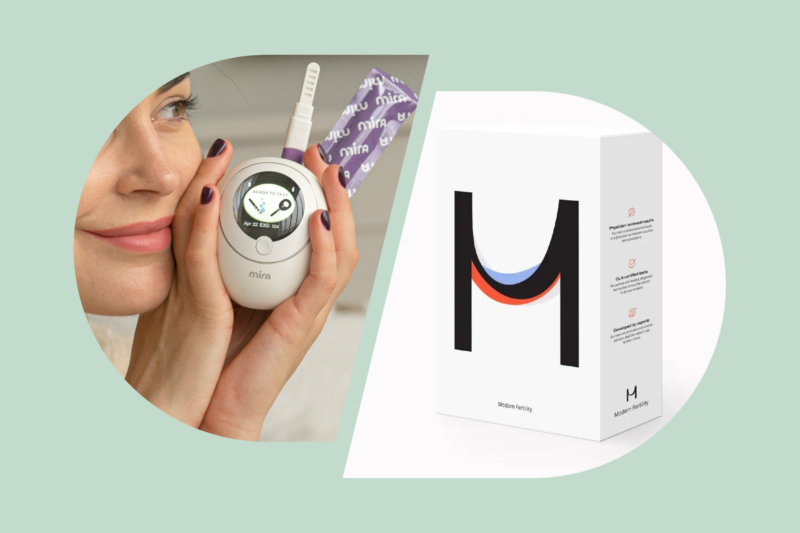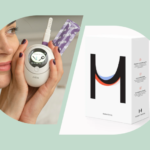Mira Survey: 65% of US women didn’t check their sex hormones during the past year
Hormones play a crucial role in women’s health. However, there is a huge medical research gap that not only limits women’s knowledge about how their bodies work, but it affects the quality of the healthcare that they receive from doctors.
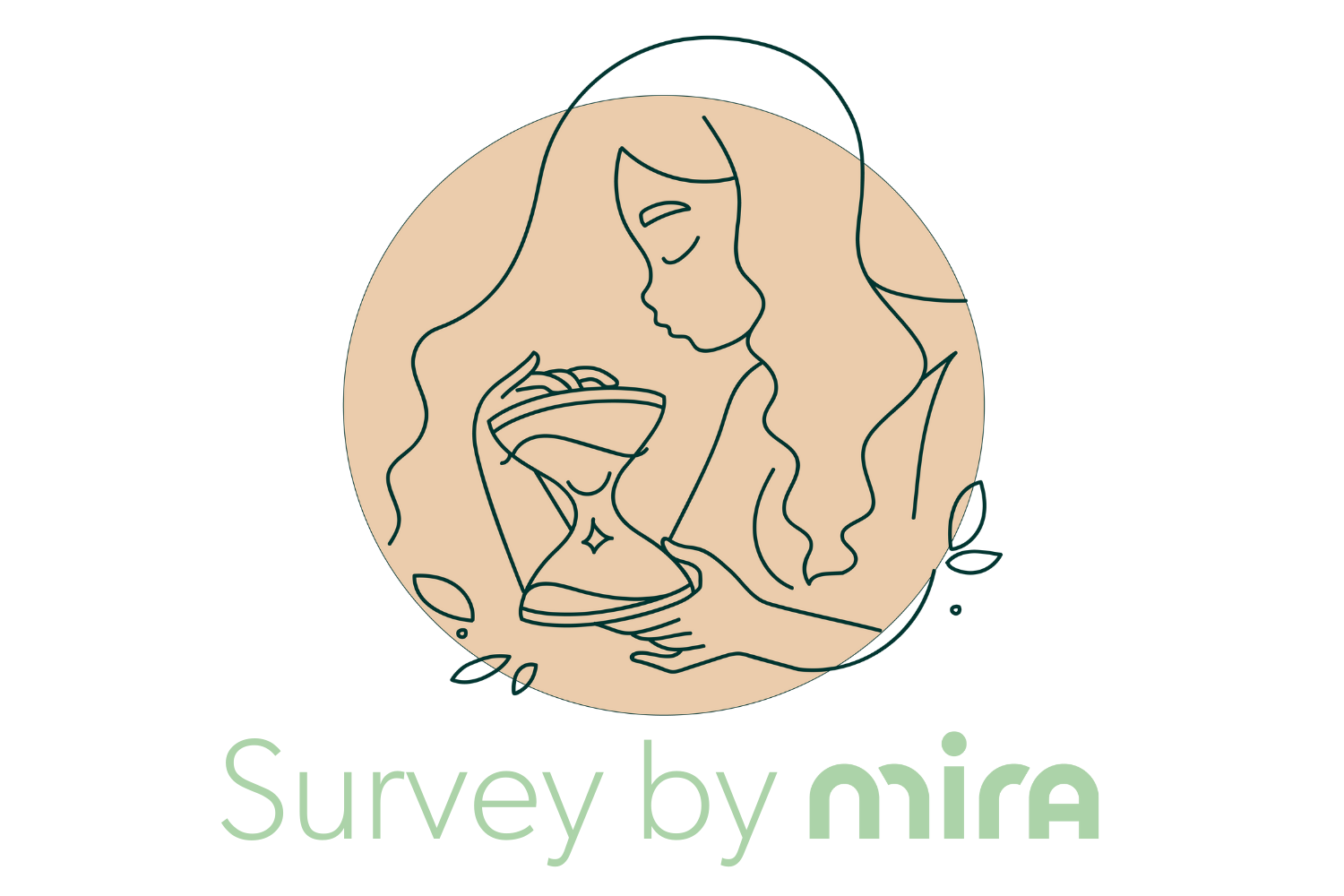
In the United States specifically, women have been excluded from health research for 16 years. This is due to researchers making the assumption that women’s hormonal fluctuations will affect the study results.
However, thanks to modern period tracking apps, we now know more about women’s hormonal fluctuations, symptoms, and cycle patterns than we have ever known before. For example, it was long believed that a woman’s cycle lasted 28 days – we know now though that this is not true and that normal cycles typically lie somewhere between 21 and 31 days.
Despite recent innovations in hormone monitoring and tracking, what happens in between the start and the end of each menstrual cycle still remains a black box for the majority of women – and researchers have a duty to help fill in this gap for both women and their healthcare providers.
Survey by Mira
Recently, Mira surveyed 1,000 women to gauge their understanding of female sex hormones and the role these hormones play in their health.
The survey utilized a new survey methodology called Random Device Engagement (RDE), and respondents were asked to answer a series of questions regarding their:
- Knowledge and perceptions about hormones
- Current hormone-related symptoms
- Experience with discussing symptoms with doctors
- Awareness of hormone-related symptoms and health conditions
The purpose of this survey was to find out how much women know about their own hormones, hormone-related symptoms, and the health conditions associated with hormonal disruptions.
We also sought to learn more about how often women’s symptoms (mostly caused by hormonal imbalances) are left unexplained or dismissed. Additionally, we wanted to gauge which symptoms women prefer to not discuss with their doctors at all, and whether or not they receive a comprehensive explanation of the causes behind certain hormone-related symptoms from their healthcare provider.
The findings in this survey support other reports and anecdotal experiences of women worldwide who feel as if their hormones are a “mystery” to both themselves and their doctors.
It is important to note that all content regarding Mira’s survey is created and published online for informational purposes only. It is not intended to be a substitute for professional medical advice and should not be relied on as health or personal advice.
Perception of hormones
Female hormones are surrounded by myths. For decades, women were often excluded from clinical drug trials, based in part on the unsubstantiated belief that fluctuations in female hormones would make women difficult to study.
This lack of knowledge and research can spawn misconceptions, which is why many women and doctors have minimal knowledge about the impact hormones can have on health.
To learn more about this, we asked a few questions to gauge respondents’ general knowledge about hormones and how often they track their hormones.
General knowledge about hormones
So how much do women know about their own hormones? From our research, we learned that estrogen is the “queen” of female hormones and is the most well-known and the most checked hormone out of all the hormones.
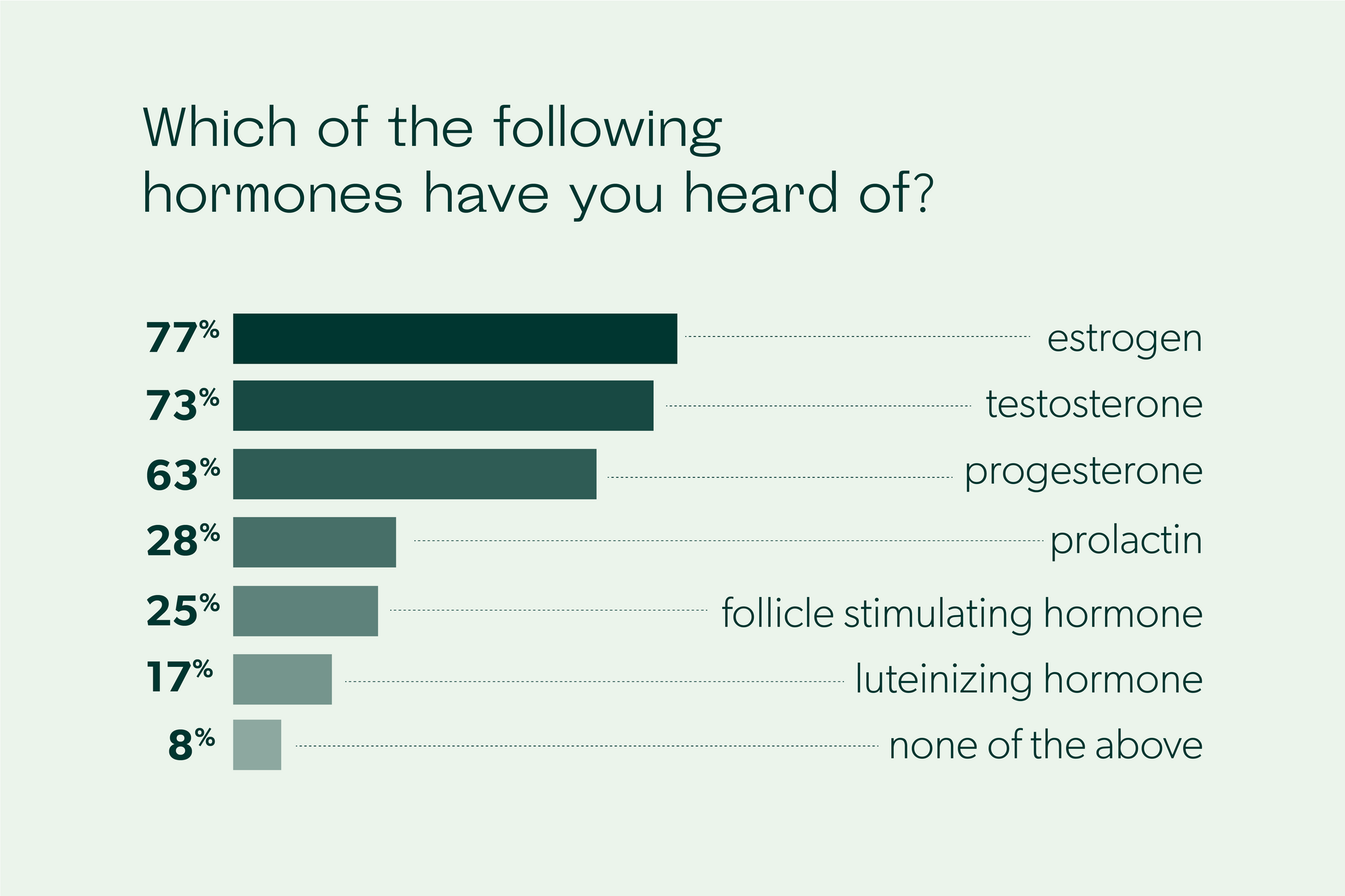
According to the poll, 76.90% of women had heard of estrogen before, and 20.50% of respondents had checked it at least once during the past year.
Not surprisingly, since estrogen is the major female hormone, playing a big role in reproductive and sexual development, the second and third place goes to testosterone (72.80%) and progesterone (62.70%).
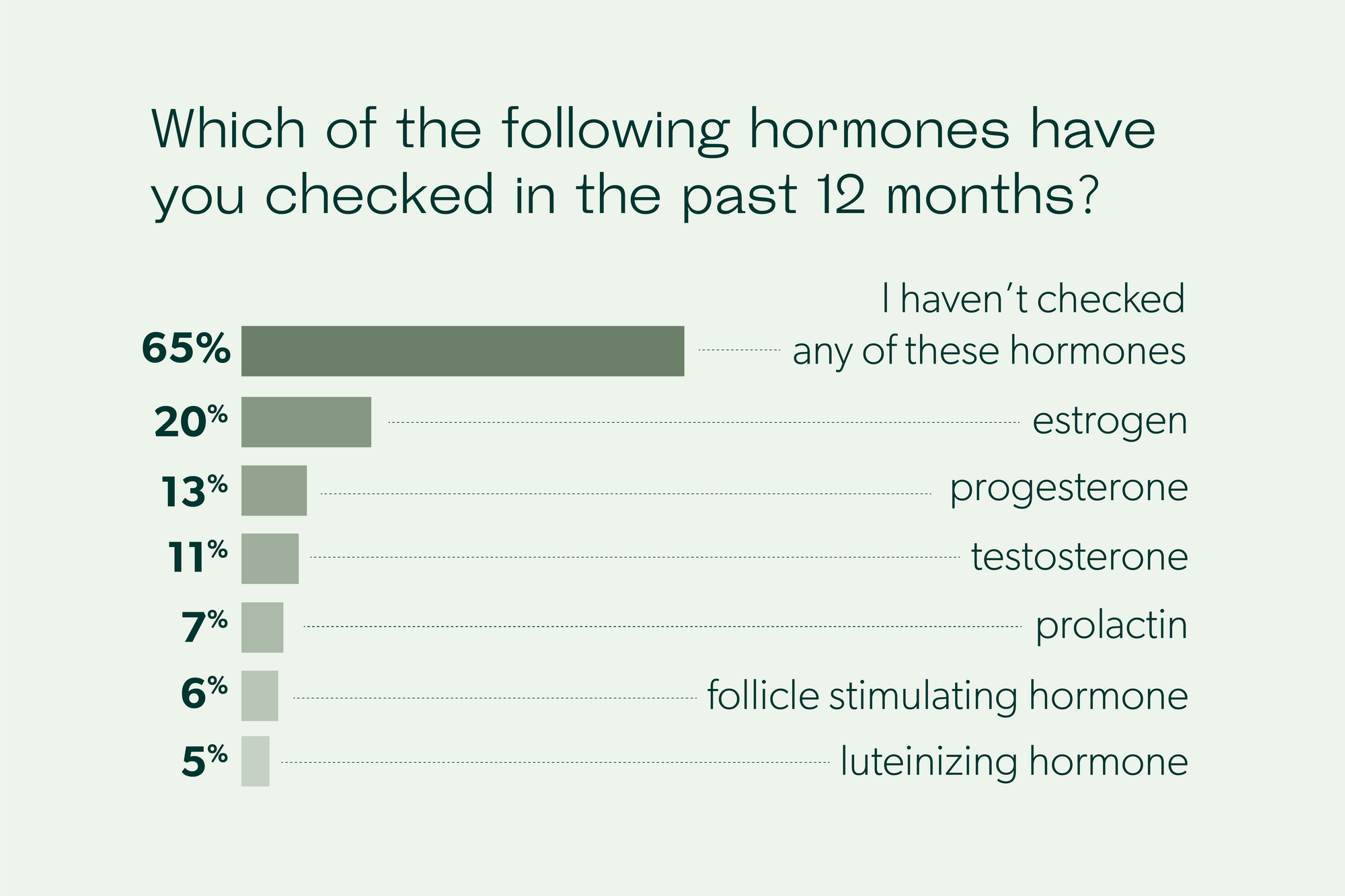
The most mysterious hormone appeared to be luteinizing hormone (LH), with only 17.20% of respondents recognizing it among others. Considering LH plays an important role in sexual development and ovulation, it is surprising that more women do not recognize it.
Frequency of hormone testing
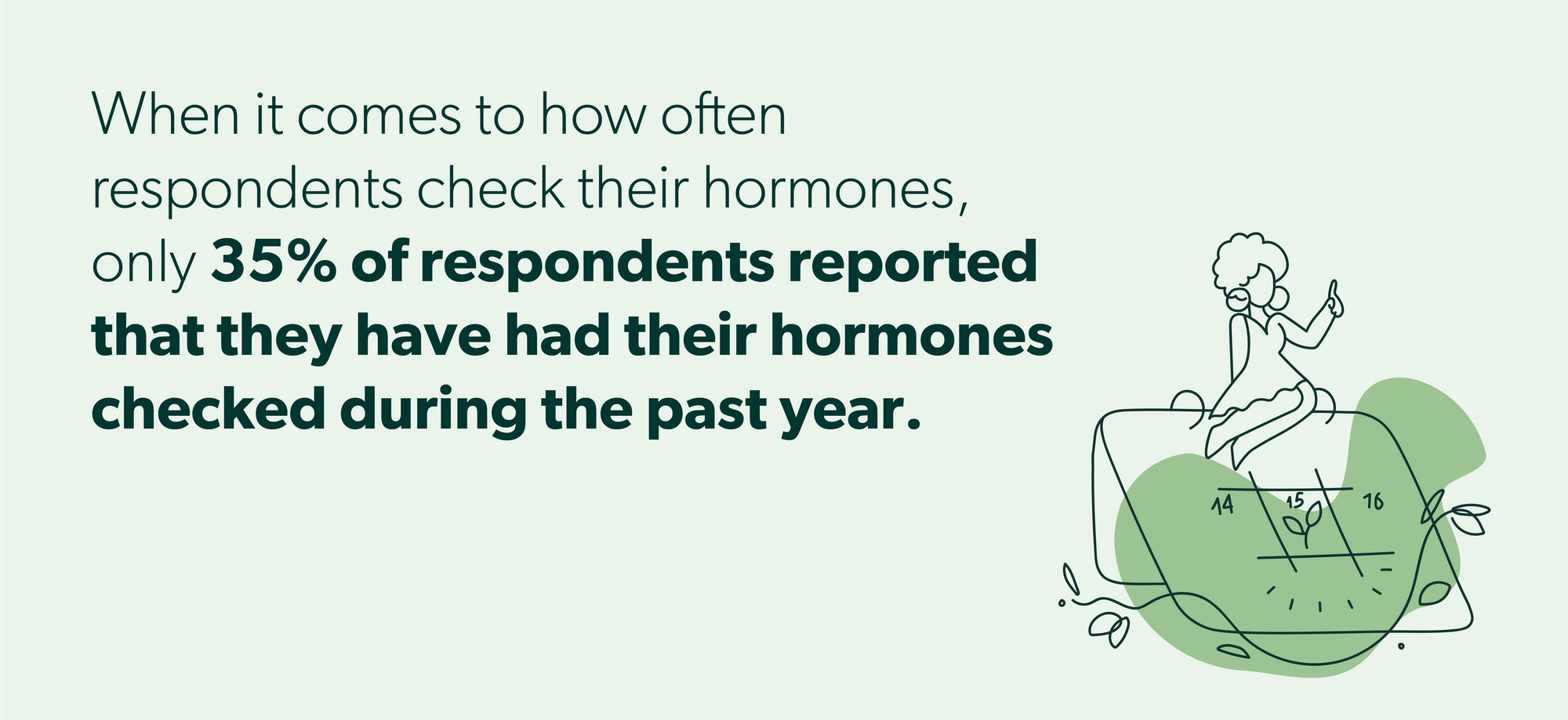
Some of the most common reasons why the remaining 65% of respondents did not have their hormones checked included a lack of doctor referral, high costs of lab tests, and simply the inconvenience of having to spend time checking their hormones.
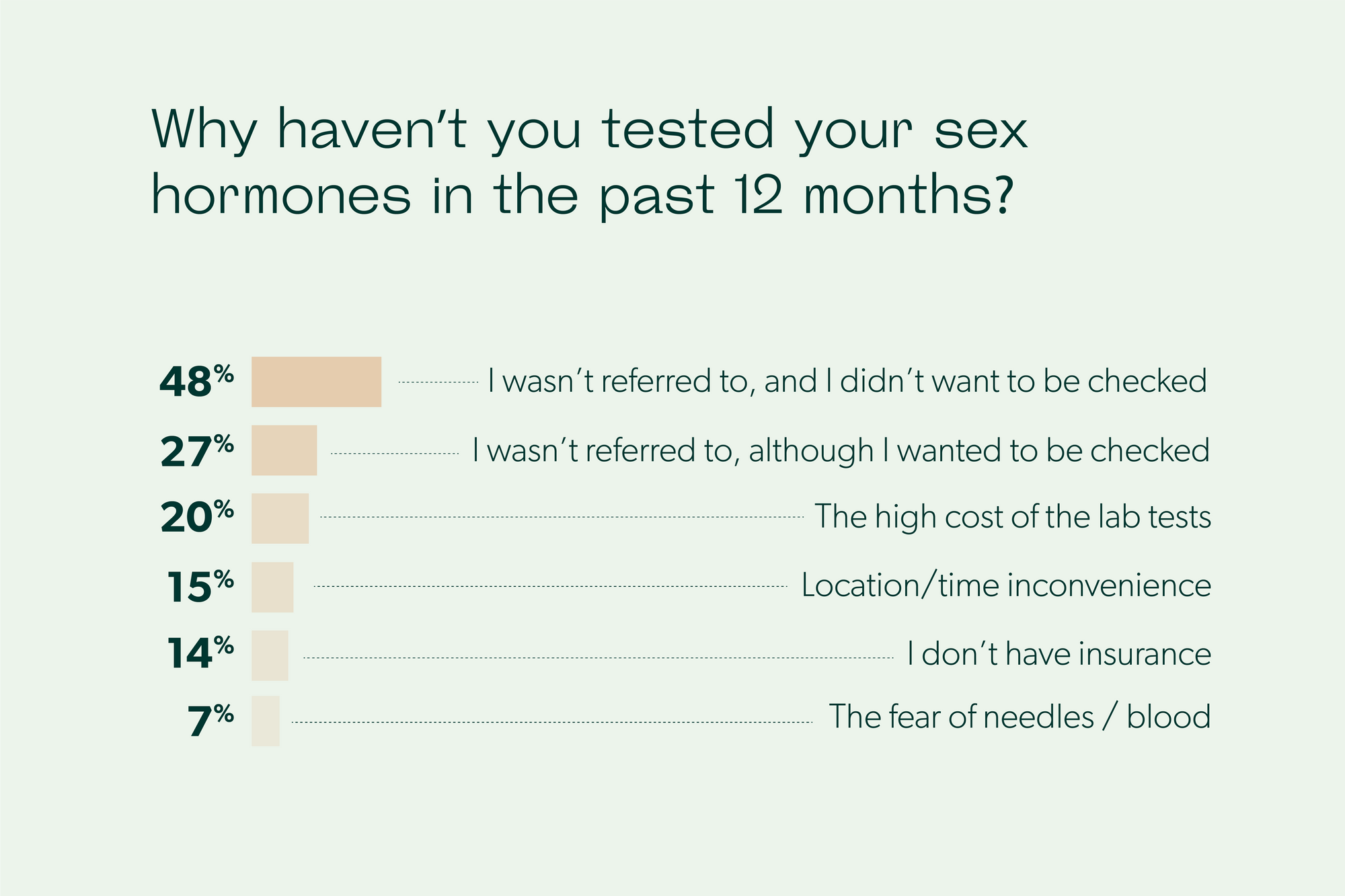
Knowledge about the impact hormones can have on mood and physical health
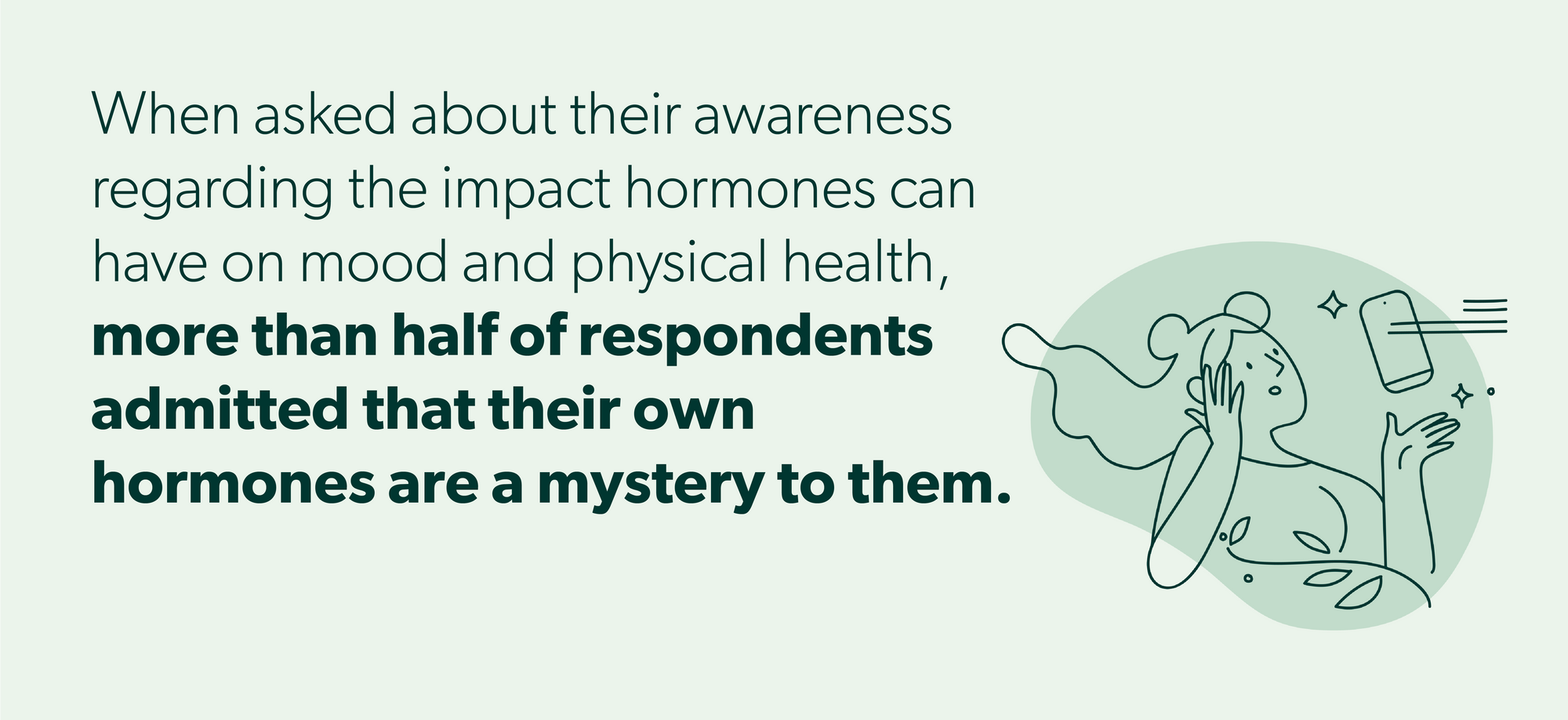
Additionally:
- 58.80% said that they have often heard other people say phrases like “It’s all because of the hormones”, with 32% of respondents admitting to having heard this phrase from a doctor.
- 63.90% expressed that they would like to better understand how their hormones affect their mood and physical condition.
- 56.20% would like to better track their hormone levels.
- One-third of respondents agreed that they often blame hormones as the cause for changes in their mood and physical condition.

Hormone-related symptoms
There is a broad range of signs and symptoms that can signal a hormonal imbalance. We wanted to know if women have an understanding of which symptoms could be associated with hormonal changes, and if they have the opportunity to talk about these symptoms openly with a doctor.

Followed by mood swings (44.90%) and bowel issues (38.60%), fatigue is the most common symptom women faced in the past year. However, only 40% brought it up to the discussion in a doctor’s office and received a clear explanation of their fatigue. 42% didn’t mention it at all, considering it a meaningless symptom.

Hesitation surrounding sharing symptoms with doctors

It also turned out that a fair percentage of women hesitate to ask their doctor about symptoms, even if it might help to make a more accurate and timely diagnosis.
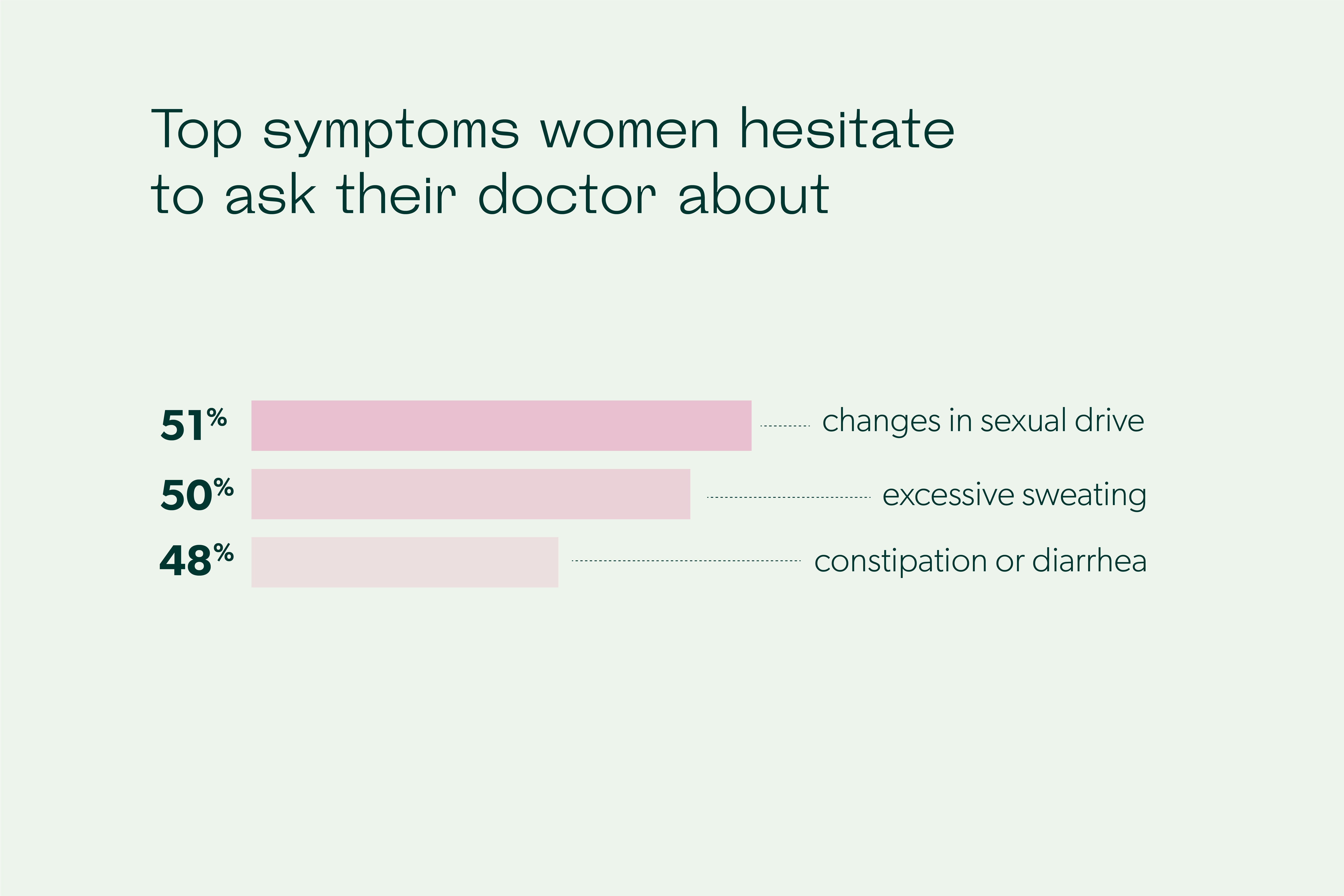
Consultation and advice received from doctors
Even when women do express their potentially hormone-related symptoms to doctors, they do not always receive comprehensive answers.
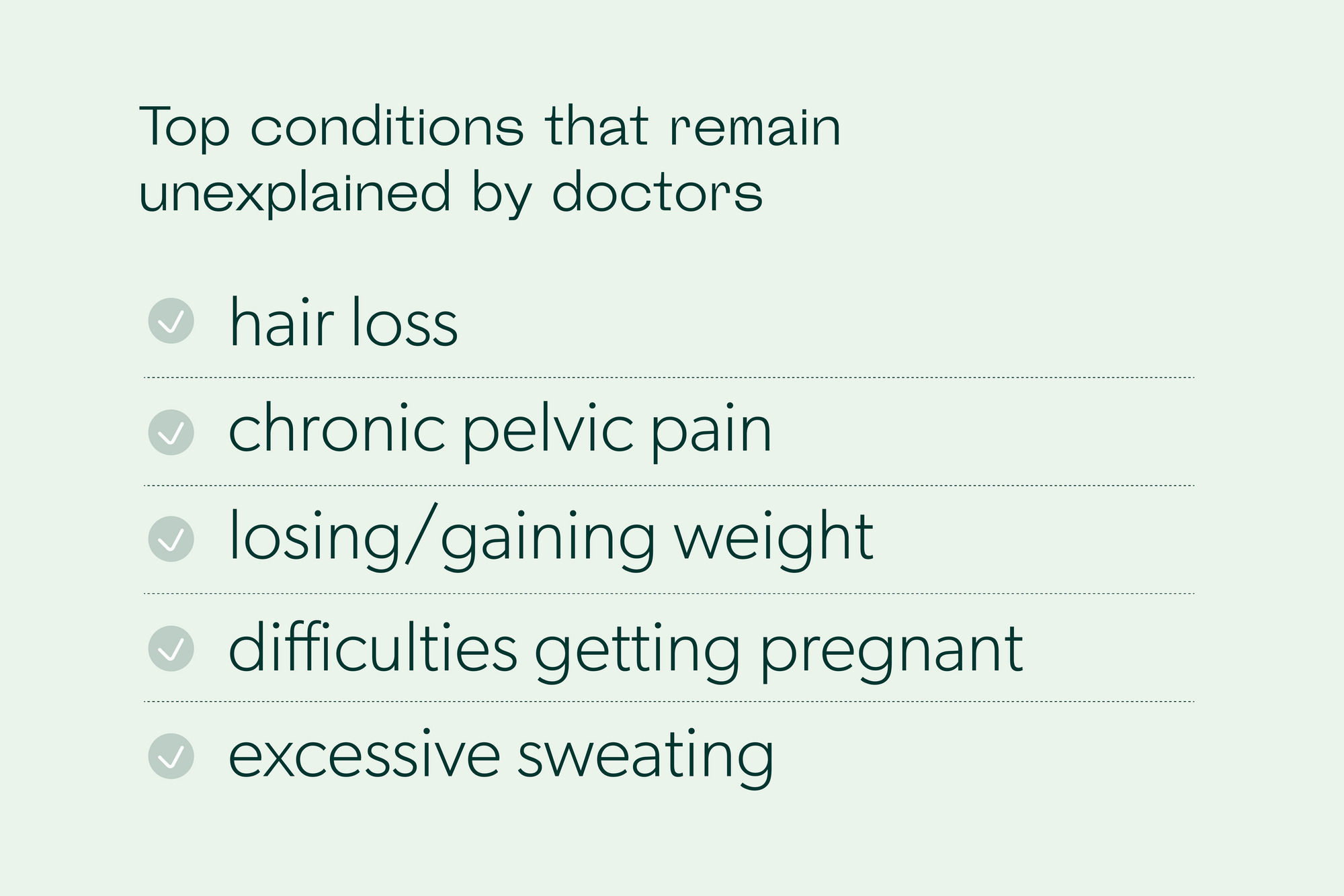
Experience with doctors
Women are more likely to wait longer for a health diagnosis, and are more likely to be dismissed and told that their symptoms are “all in their heads”.
Additionally, when they are experiencing pain, women tend to wait longer in emergency departments and are less likely to be given effective painkillers when compared to men. It is difficult to determine whether this is due to gender bias, a lack of medical research on women, or actual differences between how the sexes interpret pain.
To dive deeper into this topic, we asked a few questions regarding how respondents feel about the care they received from their doctor.
Feelings of dismissal and being overlooked
When asked about discussing their symptoms with doctors, 68% of women said that they have to prove their symptoms to their healthcare provider either “sometimes” (30%), “often” (21.70%), or “always” (16.20%).
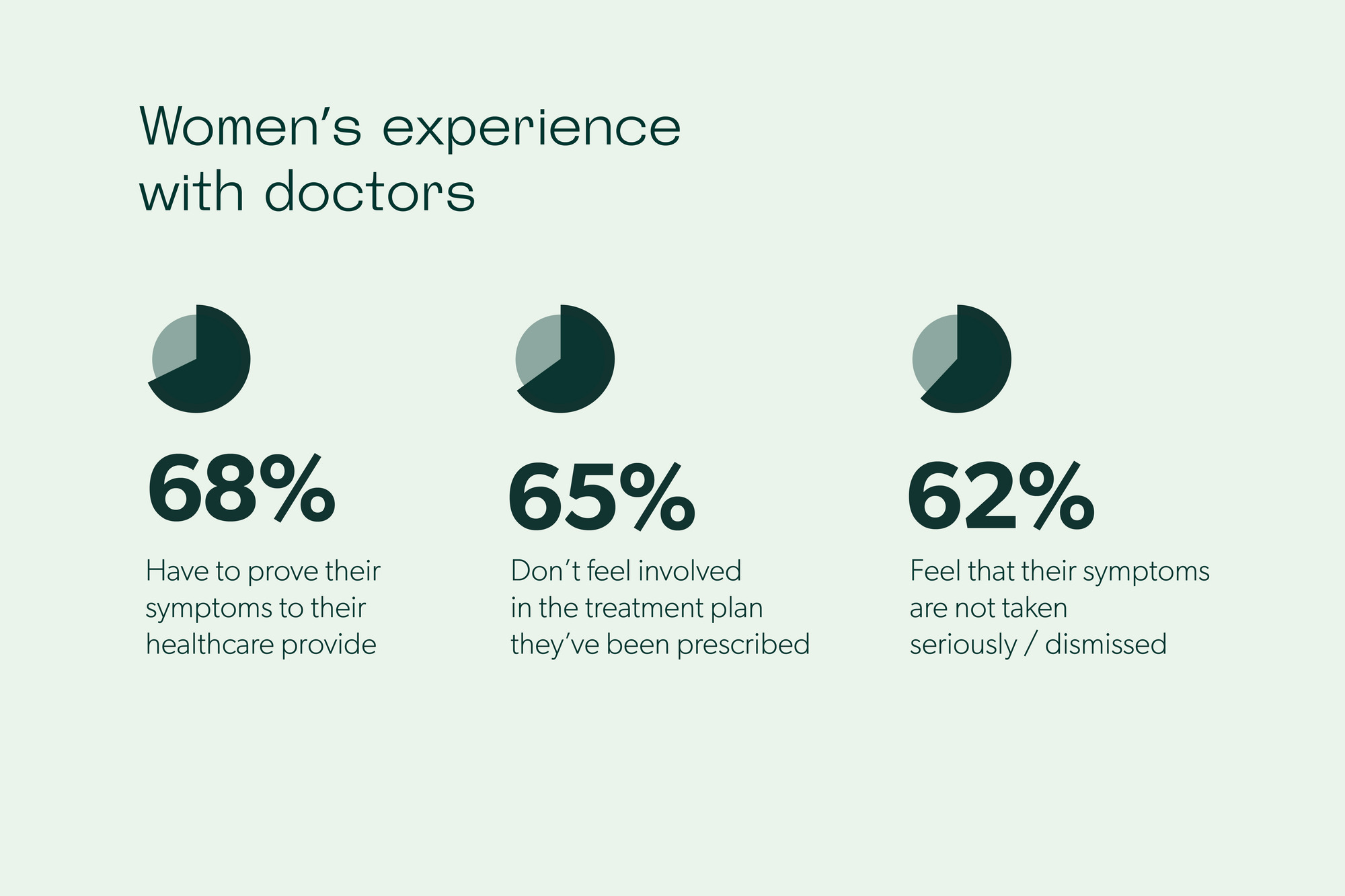
Additionally, around a third of respondents stated that “sometimes” their symptoms are not taken seriously or dismissed. An additional 22.4% admitted that this happens “often” and another 15.30% said “always”.
36.60% of women also said that their healthcare provider “sometimes” explains their systems as normal and that they are not in need of medical management.
Sentiments surrounding treatment and care
When it comes to receiving treatment and care from their doctor, 20.80% admitted that they often do not feel involved in the prescribed treatment plan. Additionally, 66.98% of respondents pointed out that if they received more information about their condition, this would help them feel more involved in the treatment plan that they were prescribed.
52.01% of respondents also wished that they had a way to track their treatment progress, and 51% wished to have more confidence in their doctor.

Another 39.67% assumed that it was a lack of women’s health research in general.
Awareness of hormone-related symptoms and health conditions
Women’s health conditions such as PCOS, endometriosis, PMDD that cause a lot of pain and often lead to infertility are still under-researched and hard-to-diagnose. We wanted to know if women are aware of health conditions that might be caused by hormonal imbalances and do they recognize the symptoms behind these conditions.
Awareness of symptoms
Of all of the respondents, only a third associated chronic pelvic pain with hormones. Mood swings, changes in sex drive, hot flashes, irregular periods, and fatigue were the top five most common symptoms to be associated with hormonal imbalance.
The top five symptoms that were the least likely to be associated with hormones included chronic pelvic pain, hair loss, constipation and diarrhea, difficulties with getting pregnant, and excessive facial or body hair.
Awareness of health conditions
Of all the health conditions that can be caused by a hormonal imbalance, the most recognizable condition among respondents was infertility. The least recognizable was adenomyosis.
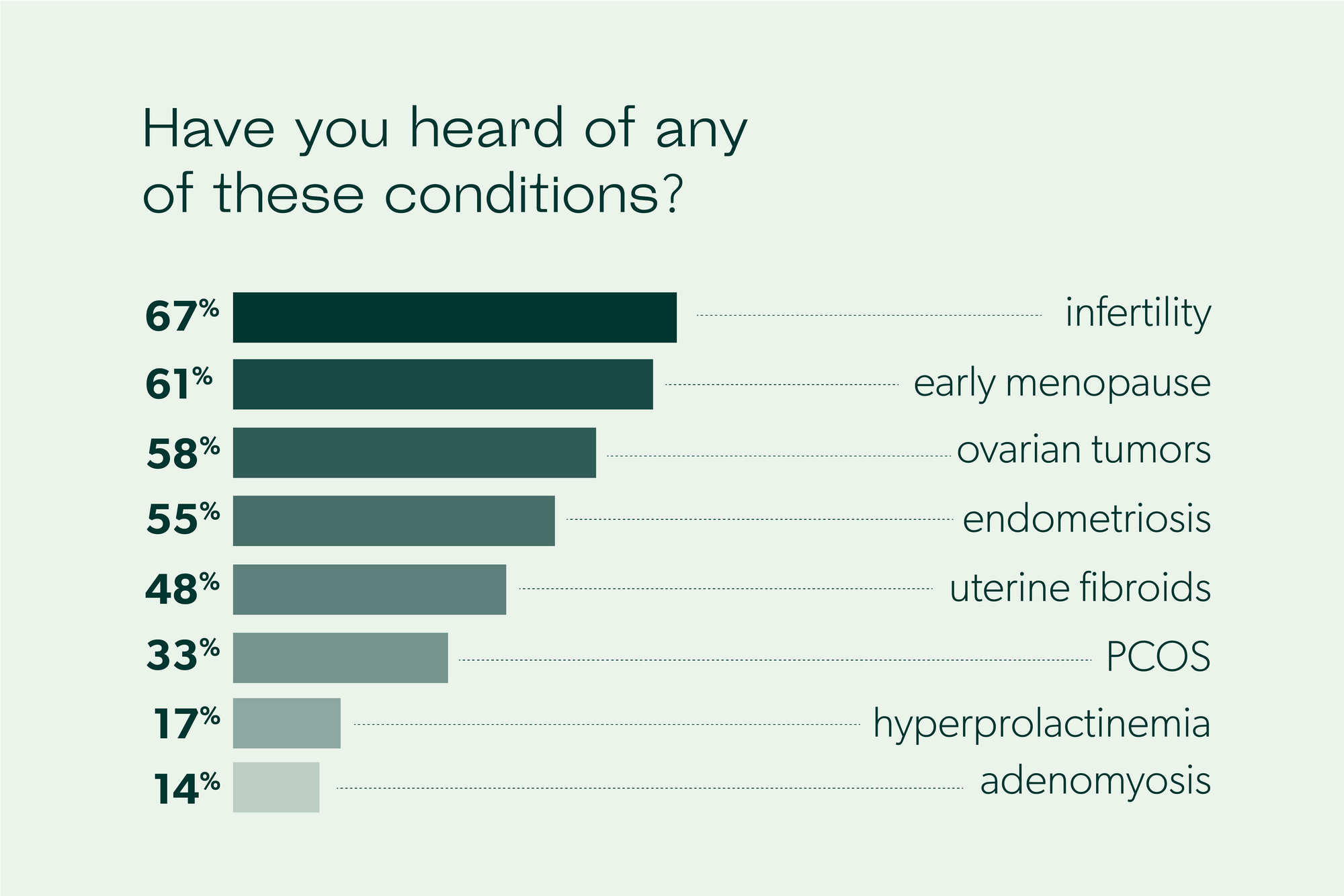
Additionally, although 66% of women were aware that infertility was a health condition, 20% of respondents were unsure whether they were experiencing infertility or not.
Other common conditions that respondents were aware of include:
- Early menopause (61.50%)
- Ovarian tumors (58.20%)
- Endometriosis (55%)
Lesser known conditions included adenomyosis (14.40%) and hyperprolactinemia (16.90%).
Additionally, despite the fact that PCOS affects nearly five million women in the United States, PCOS was only recognized by 32% of respondents. An additional 25% of respondents had no idea if they had PCOS or not.
Methodology
The survey of 1,000 people was run on September 16, 2021, and it utilized a new survey methodology called Random Device Engagement (RDE). RDE is the natural successor to Random Digit Dialing. By delivering a survey inside popular mobile apps, RDE utilizes the same neutral environment as RDD (an audience who are not taking premeditated surveys) by reaching potential respondents inside mobile apps they were using anyway.
Respondents were required to be over 18 years old. The majority of respondents were 25-44 years old. Respondents identified their gender as female (100%). Respondents identified their racial/ethnic background as White (68%), Black (11%), Hispanic (8%), Asian (4%), Latino (3%), Multiracial (3%), other / prefer not to say (4%).
Mira’s Editorial Process
All content produced by Mira meets stringent editorial standards, ensuring excellence and accuracy in language and medical precision. Every piece undergoes thorough fact-checking and review by qualified professionals. Check out our full editorial process to learn more.






